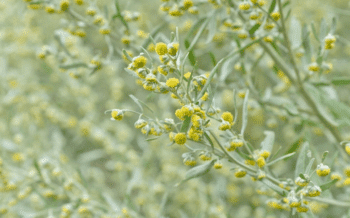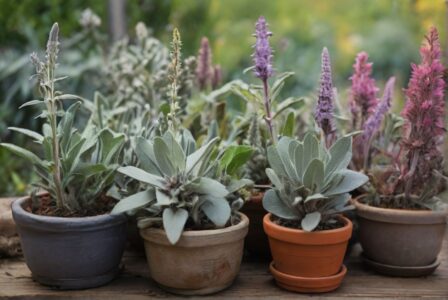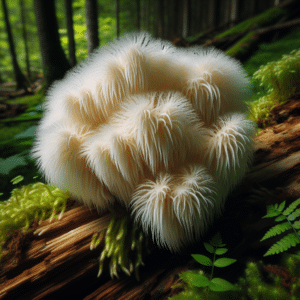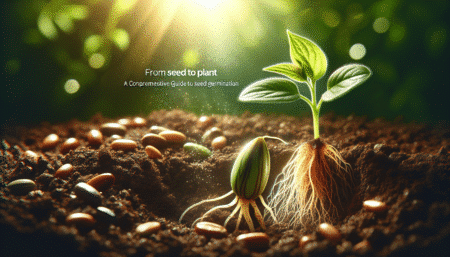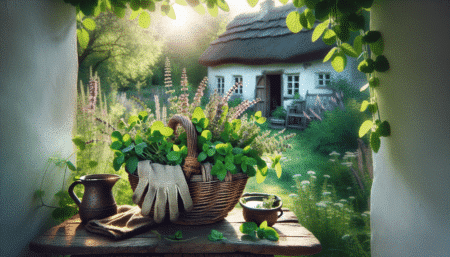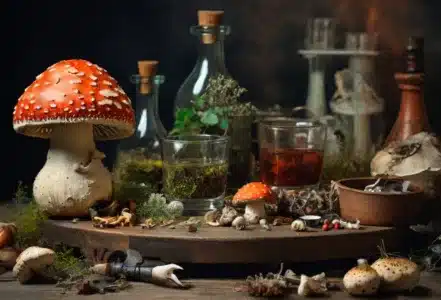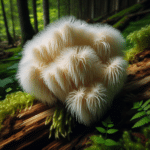- Introduction
- The importance of magic plants in Celtic mythology and culture
- Examples of magic plants in ancient Ireland
- Connections to various gods and natural elements
- The use of plants in rituals, medicine and magic
- Other well-known medicinal and magic herbs of the Celts
- Interesting facts about cultivation, taking Celtic traditions into account
- Incense, spices & herbs from ancient Britain
- Healers & druids - the true experts of the magical "magic" of the Celts
- Conclusion
The magic plants of the Celts
Welcome to our blog article about the fascinating magic plants of the Celts! Immerse yourself with us in the mystical world of Celtic mythology and culture, in which plants play an important role. Learn more about the various plants that were considered magical in ancient Ireland and were associated with gods and natural elements. We will also look at the use of plants in rituals, medicine and magic and learn about other well-known medicinal and magical herbs used by the Celts. I will also give you interesting information about the cultivation of Celtic plants using traditional methods and about incense, spices & herbs from ancient Britain. Finally, we will take a look at the healers and druids, the true experts of the magical "magic" of the Celts. Be prepared for a magical journey through the world of the magic plants of the Celts!
1. introduction
Welcome to the world of the magic plants of the Celts! It is fascinating how much Celtic mythology and culture was influenced by the powers of nature. From sacred groves to magicians and druids performing their rituals and spells with plants, plants played an important role in the lives of the Celts. In this blog article, we'll dive deep into history and look at some examples of magical plants in ancient Ireland. We'll also talk about how these plants were used to make connections to various gods and natural elements. Let's discover together what it is about the mysterious powers that make up these plants!
2. the significance of magic plants in Celtic mythology and culture
The significance of magic plants in Celtic mythology and culture is of great importance. For the Celts, plants were not only an important part of their diet, but also a central element of their rituals, magic and medicine. Nature and spirituality played an inseparable role in the Celtic worldview, which is why they placed particular importance on the healing and magical powers of plants. Some of the most well-known magic herbs in ancient Ireland were mugwort, mistletoe, oak and bracken. These were often associated with various gods and natural elements - mistletoe, for example, was seen as a symbol of life and was associated with the god Lugh.
The use of plants was very diverse: they were used both to cure illnesses and to perform rituals. Druidism experts played a decisive role in this - they were well versed in the powers of nature and knew exactly which plants to use for which purpose. All in all, it can be said that magic plants were of great importance to the Celts and continue to fascinate them to this day. If you want to find out more about the cultivation of these magical plants or enjoy their active ingredients yourself, there are still plenty of opportunities to do so today - whether by visiting a Celtic garden or buying incense and spices from ancient Britain.
3. examples of magic plants in ancient Ireland
In ancient Ireland, magical plants played an important role in Celtic mythology and culture. One example of this is the datura, which was revered as a sacred plant and was often used for visions and prophecies. Mistletoe was also a symbol of fertility and immortality in ancient Ireland.
It was used at important festivals such as Beltane and was regarded as protection against evil spirits. Another well-known magic plant is verbena, which was valued for its healing effect on the body and soul. It was also used to ward off witchcraft and provide protection. Overall, plants were of great importance to the spiritual practice of the Celts in ancient Ireland and were used in many areas such as rituals, medicine and magic.
4. connections to various gods and natural elements
Magic plants played an important role in Celtic mythology and culture. They were not only used for medicinal purposes, but also as magical tools in rituals and ceremonies. The Celts believed that each plant was connected to different gods and natural elements and therefore had its own unique power.
For example, mistletoe was revered by the Druids as a sacred tree associated with the sun god Belenus. Verbena, on the other hand, was considered the plant of the water god Lir and was often used to purify water. Oak leaves were also particularly important, as they were associated with the mighty thunder god Taranis. By using these plants in their rituals, the Celts were said to be able to influence the gods and thus fulfill their wishes or receive protection from negative forces.
5 The use of plants in rituals, medicine and magic
The Celts were known for their close connection to nature and their belief in the mystical powers of plants. This connection was also reflected in their mythology and culture, where magical plants played an important role. The Celts believed that certain plants had magical powers, which they used for rituals, medicine and magic. Mistletoe, for example, was revered as a symbol of immortality and yew was seen as the gateway to the underworld.
Nettle was also valued by the Celts - not only as a medicinal plant, but also because of its shamanistic effect in rituals. The use of plants in Celtic magic was therefore not a rarity, but part of the Celts' daily life. It is fascinating to see how these ancient customs live on to this day and continue to inspire many people.
6. other known medicinal and magical herbs of the Celts
Other well-known medicinal and magical herbs used by the Celts include valerian, vervain and mistletoe. Valerian was used by the Celts to calm the mind and was considered a protective plant against evil spirits. Vervain, on the other hand, was used in Celtic medicine to treat digestive problems and relieve headaches. Mistletoe was a sacred plant for the Celts, associated with fertility, immortality and love. It was often used in birth rituals and was considered a protective plant against illness and misfortune. These herbs were not only used for healing purposes, but also for magical rituals.
The Celts believed in the power of nature spirits and used herbs such as mugwort or juniper berries to summon or ward them off. Certain herbs were also harvested at specific phases of the moon to enhance their effect. Overall, the use of plants played a major role in Celtic culture and mythology. They were closely associated with various gods and elements such as water, fire and air. The use of plants was not only for medicinal purposes, but also to strengthen the spiritual experience.
If you are interested in growing Celtic herbs yourself, there are a few things to bear in mind. For example, it is best to plant them near water sources or in places with good sunlight. The phases of the moon should also be taken into account when harvesting to enhance their magical effects. Overall, the Celts were true experts in handling plants and using them for medicinal and spiritual purposes. Healers and druids played an important role as mediators between man and nature by passing on their knowledge of plants and their powers. The importance of magical plants in Celtic culture is both tangible and fascinating to this day.
7. interesting facts about cultivation with regard to Celtic traditions
When it comes to growing magic plants with Celtic traditions in mind, there are some important things to consider. For example, the lunar calendar was of great importance to the Celts as it helped them determine the best time to plant and harvest. Also, certain plants were favored because of their connection to certain gods or natural elements.
In addition, the quality of the soil and the availability of water played an important role in the cultivation process. Another aspect was the use of natural fertilizers such as animal dung or compost instead of chemical agents. All these factors contributed to the Celts' success in growing magical herbs that were used in rituals, medicine and magic. It is fascinating to see how their deeply rooted cultural traditions also affected the cultivation and use of plants.
8. incense, spices & herbs from ancient Britain
In ancient times, incense, spices and herbs played an important role in Celtic culture. These magical ingredients were also very popular in Celtic Britain and were used in a variety of ways. For example, burning yarrow was a way of warding off spirits and driving away evil energies. Another well-known herb was juniper, which was used for both purification and protection. The Celts also used mugwort for its calming effect and thyme as a remedy for colds and coughs.
These plants were not only used in medicine, but also in rituals and ceremonies. By burning certain herbs or using scented oils, the Celts were able to strengthen their spiritual connection to the gods or evoke visions. The use of incense, spices and herbs therefore not only had a practical function, but above all served to create deeper access to the magical world of the Celts. It is fascinating to see how important these small plants were and how they are still used today in various forms - be it in medicine or in modern aromatherapy.
9. healers & druids - the true experts of the magical "magic" of the Celts
Magic plants played an important role in Celtic culture. They were not only used as remedies, but also for magical rituals and spells. The healers and druids were the true experts in the magical "spells" of the Celts. They were familiar with the various plant species and knew exactly which plant could be used for which purpose. In their hands lay the knowledge of the mysterious powers of nature and their connection to the gods and natural elements.
The druids had a special understanding of the energies of plants and were able to use them to support their magic. Mugwort, for example, was used to induce visions, while mistletoe served as protection against evil spirits. Even today, there are still people who draw on the knowledge of ancient healers and try to integrate it into their own practice. Because even though times have changed, one thing remains the same: The fascination for the mysterious powers of nature and their healing effect on body and soul.
10 Conclusion
Overall, it can be said that the magic plants of the Celts were of enormous importance in mythology and culture. They were not only closely associated with various gods and natural elements, but were also used in rituals, medicine and magic. The Celts knew a variety of medicinal and magical herbs, the cultivation of which was often in line with Celtic traditions. Incense, spices and herbs from ancient Britain also played an important role in the magical "spells" of the Celts.
Ultimately, however, it was mainly healers and druids who preserved and passed on the knowledge of magic plants. They were the true experts in this field and contributed significantly to the development of the Celtic art of healing. All in all, there is a deep-rooted understanding of the power of nature and its use in everyday life - a legacy that continues to this day.
Note: The information in this article is for informational purposes only and is not intended to replace the advice of a physician or other healthcare professional. Always consult a doctor before using any new herbs or supplements. Furthermore, you should always check whether the cultivation/possession/use/processing of certain plants is permitted in your country. As we only offer ornamental plants in our store, we are allowed to only Provide information and advice on the correct care of plants!

